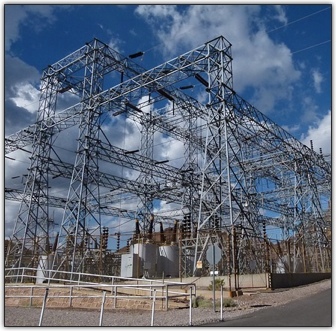Demand Response.
This is an electricity market term you’re likely to hear more as time goes on.
So, what is Demand Response and why are we talking about it with respect to our Round Rock electricity market?
Said simply, Demand Response is a shift (in time) of electricity demand. This shift is done as a response to market and electricity grid needs.
Let me give a more in-depth explanation:
During times of peak demand for electricity in Texas, the price of that electricity is typically many times more then during the off-peak times.
The high costs of the generated electricity during these peak times can financially strain electricity retailers who are purchasing electricity at these extra-high rates to supply their customers.
Also, during these peak times, the system, or the infrastructure, can be greatly strained because of the increase of needed flow of electricity to meet these high demands. During these times there are typically increased problems, breakdowns of components, etc., which again ‘adds to the bottom line’ costs for utility companies. As always, these additional costs are eventually born by the end consumer. These peak times are the Texas summer afternoon, and the occasional extreme cold temperature of a winter storm.
If electricity demand during these peak times could be reduced, this would be better for both the infrastructure, and the financial stability of electricity retailers. And finally, it could provide a stable market and lower electricity rates for the end consumer.
So, what forms of Demand Response could be used to reduce electricity usage during these peak times?
The simplest method is voluntary participation. An example of this is when a consumer adjust their air conditioning thermostat temperature up a few degrees during a hot summer day, during these peak hours. A substantial ‘contribution’ could be moving the thermostat from 76° to 80° for an hour or more. Another way might be to ensure no one in the home is running the dishwasher, dryer, washer, or other appliances during the peak-demand hours. The home owner can ‘shift’ the usage of these appliances to off-peak times when electricity generation costs are greatly reduced. For businesses this might mean a shift of nonessential services to times that are off-peak.
 In this day of advanced technology, we can take advantage of wireless connectivity, and use an ‘automatic’ or ‘remote-control’ form of Demand Response. In this case, devices are used around the home or business that allow the electric utilities to reduce the demand at that location. For instance, a thermostat could be remotely controlled by the utility to rotate through a cycle, with other homes or businesses, during the peak times, adjusting the thermostats as needed for a period of time. Still other devices could restrict usage of an appliance, such as dryers and other heavy electric demand appliances, during peak times.
In this day of advanced technology, we can take advantage of wireless connectivity, and use an ‘automatic’ or ‘remote-control’ form of Demand Response. In this case, devices are used around the home or business that allow the electric utilities to reduce the demand at that location. For instance, a thermostat could be remotely controlled by the utility to rotate through a cycle, with other homes or businesses, during the peak times, adjusting the thermostats as needed for a period of time. Still other devices could restrict usage of an appliance, such as dryers and other heavy electric demand appliances, during peak times.
Some utilities already have Demand Response Programs in place that financially reward customers for voluntarily using less electricity during peak times.
When you understand the wild swings the cost of wholesale electricity can experience during these peak times, you can see why companies are rewarded for their voluntary reduction in electricity usage. For instance, the cost of generating 1 MegaWatt during off-peak times can be as low as a few dollars; whereas the cost of that same MegaWatt during peak demand periods can be in the thousands of dollars! Fortunately, these ‘high price periods’ only last for minutes at a time. However, as short as they may be, they still can put a financial strain on an electricity retailer operating on a thin margin. In fact, a number of retailers have gone bankrupt as a result of just a few extreme price periods.
This discussion wouldn’t be complete without mentioning the most dire form of ‘Demand Response’ — the rolling blackout. These are used to prevent a major breakdown in the electricity grid. None of the market participants like this option, understandably so. These are rare, but a couple have occurred in Texas over the last few years.
 Stay tuned, as technology advances we will see more high-tech options for the introduction and use of Demand Response in our electricity transmission and delivery system. This is good news for the end consumer, because as more people participate, the generation costs for the companies providing our service can remain at reasonable prices, and that will help to keep the electricity rates down for the Round Rock electricity consumer.
Stay tuned, as technology advances we will see more high-tech options for the introduction and use of Demand Response in our electricity transmission and delivery system. This is good news for the end consumer, because as more people participate, the generation costs for the companies providing our service can remain at reasonable prices, and that will help to keep the electricity rates down for the Round Rock electricity consumer.
We invite you to call us if you have any questions regarding your electricity service.
[box title=”*RoundRockElectricity.com is a PRIVATE COMPANY.” centered_title=”true” inner_padding=”small” with_bg=”false”]*This site is not affiliated with or a part of the City Government of Round Rock, TX. The City of Round Rock DOES NOT provide electricity service. Round Rock, TX is in the deregulated area of the Texas electricity market, which means consumers have a choice in electricity providers.[/box]
This site is owned by an Independent Consultant of Ambit Energy (a Texas-based Retail Energy Provider, PUCT Certificate #10117). Ambit Energy is does not maintain nor are they responsible for the content of this site.
Round Rock Electricity is grateful to be serving the Round Rock, Pflugerville, Hutto, and Taylor area of Central Texas!

